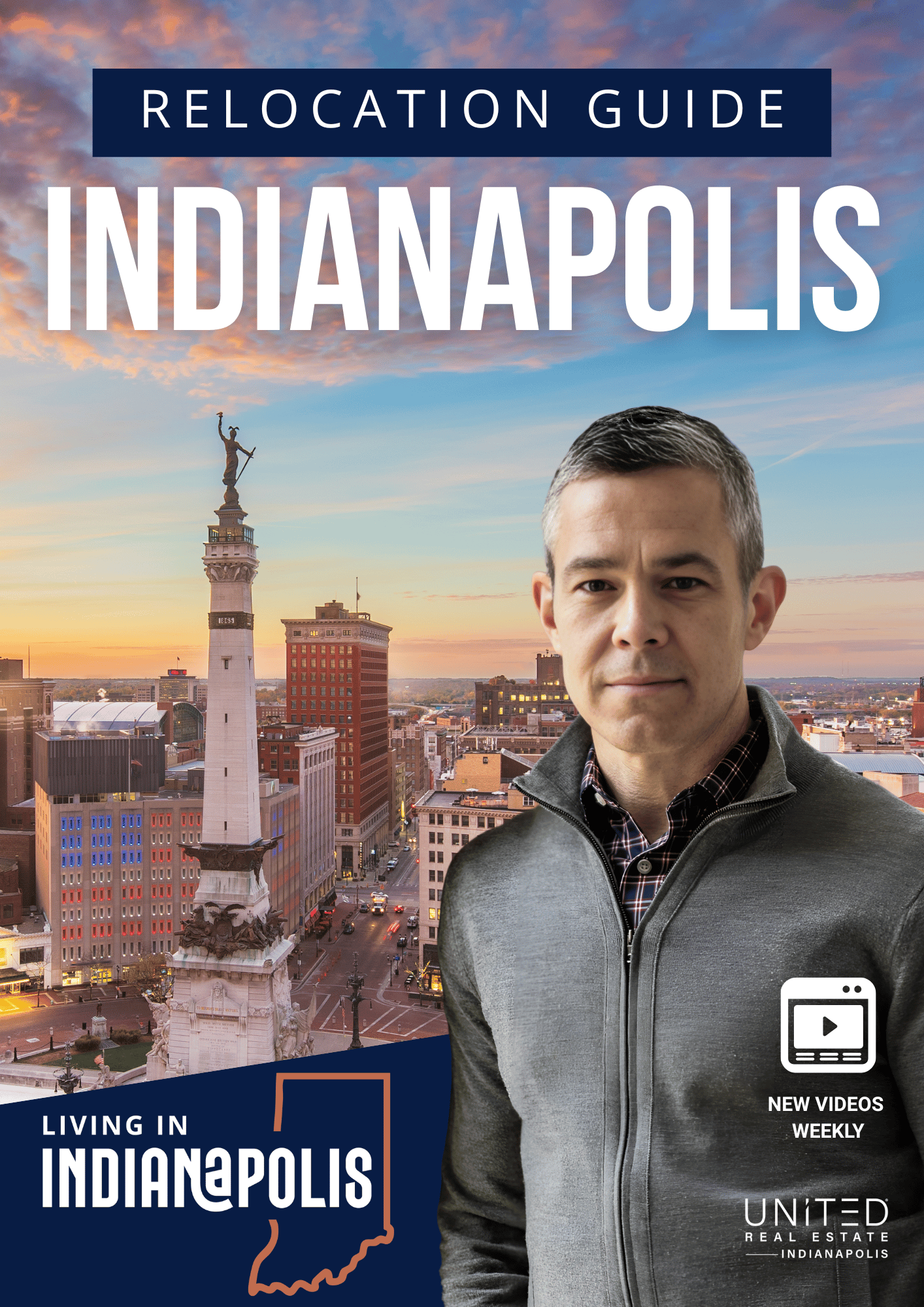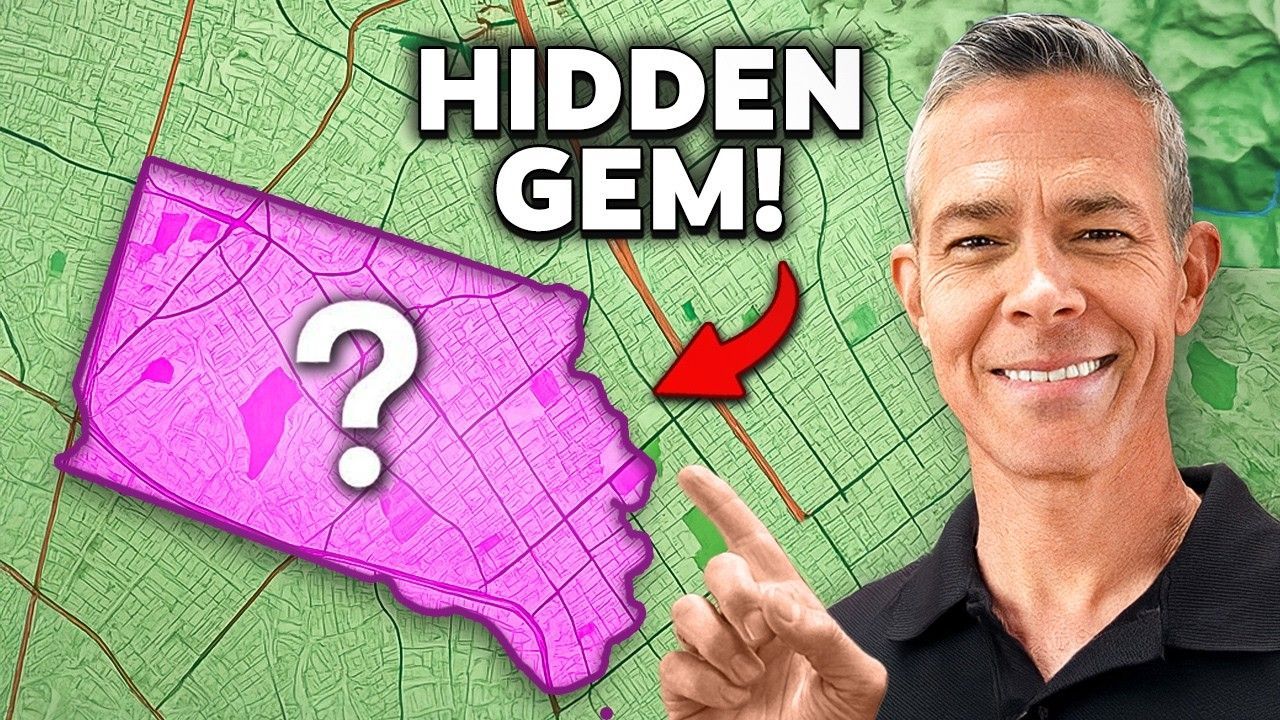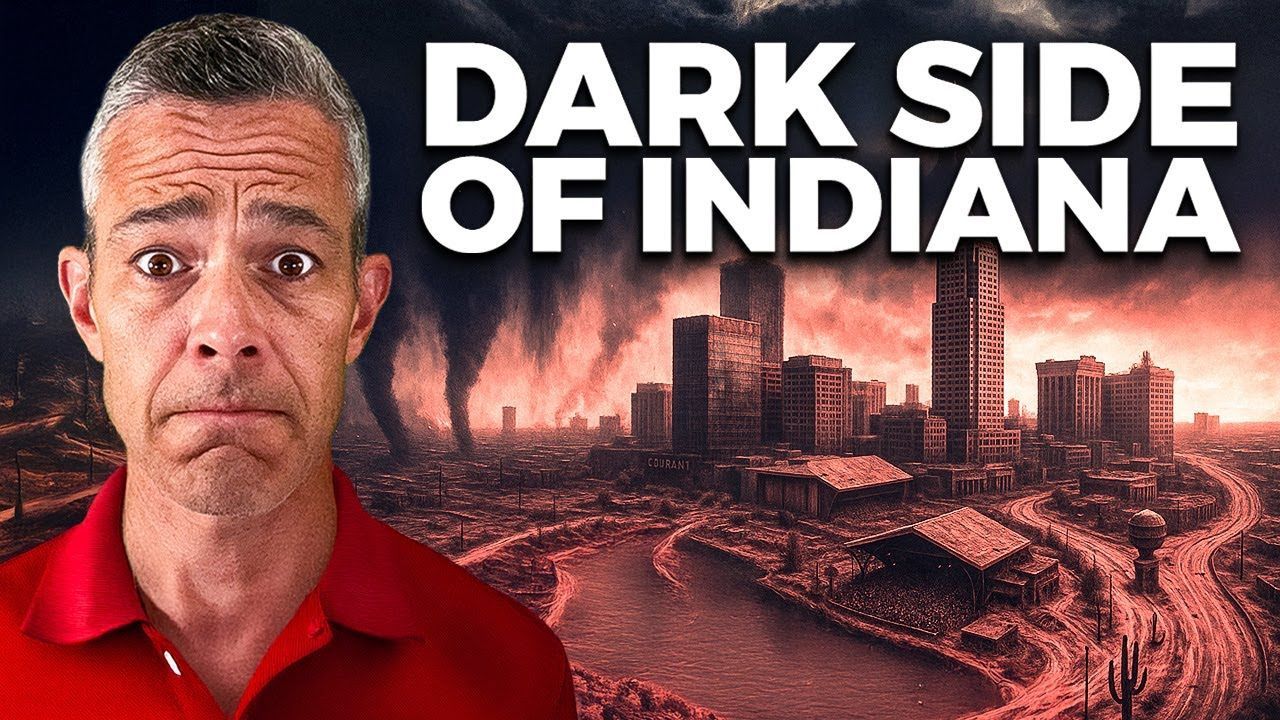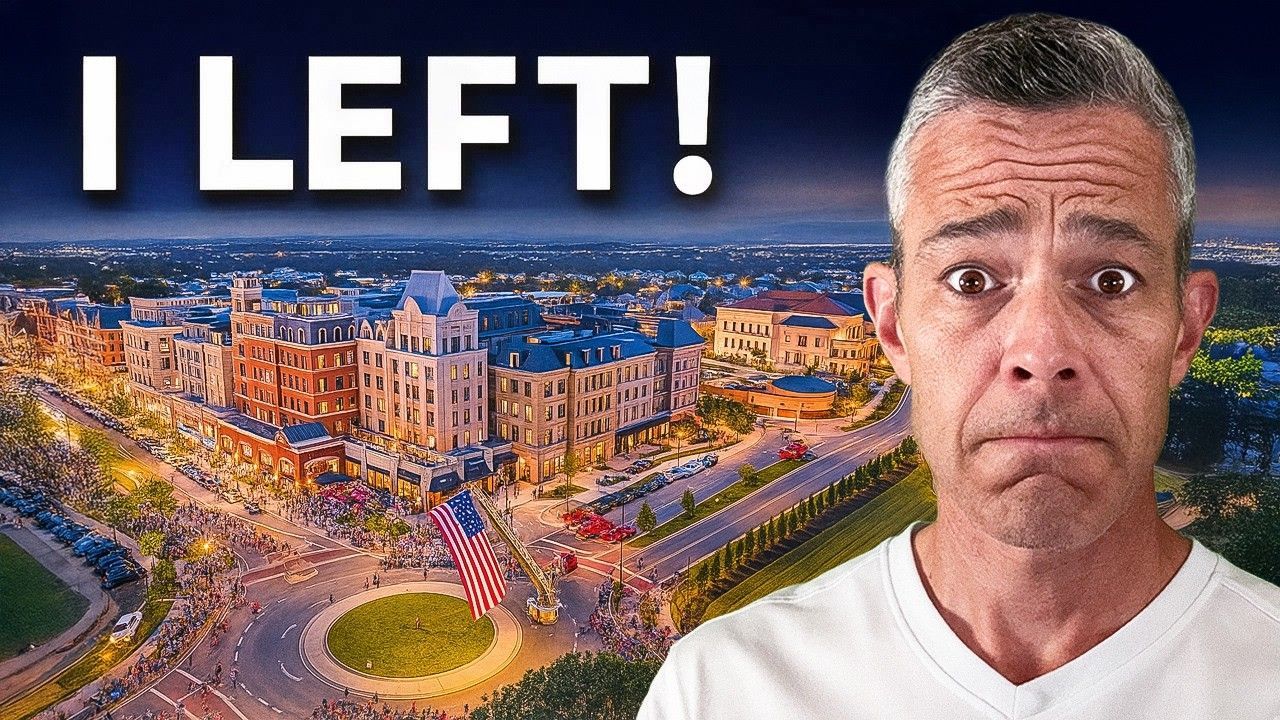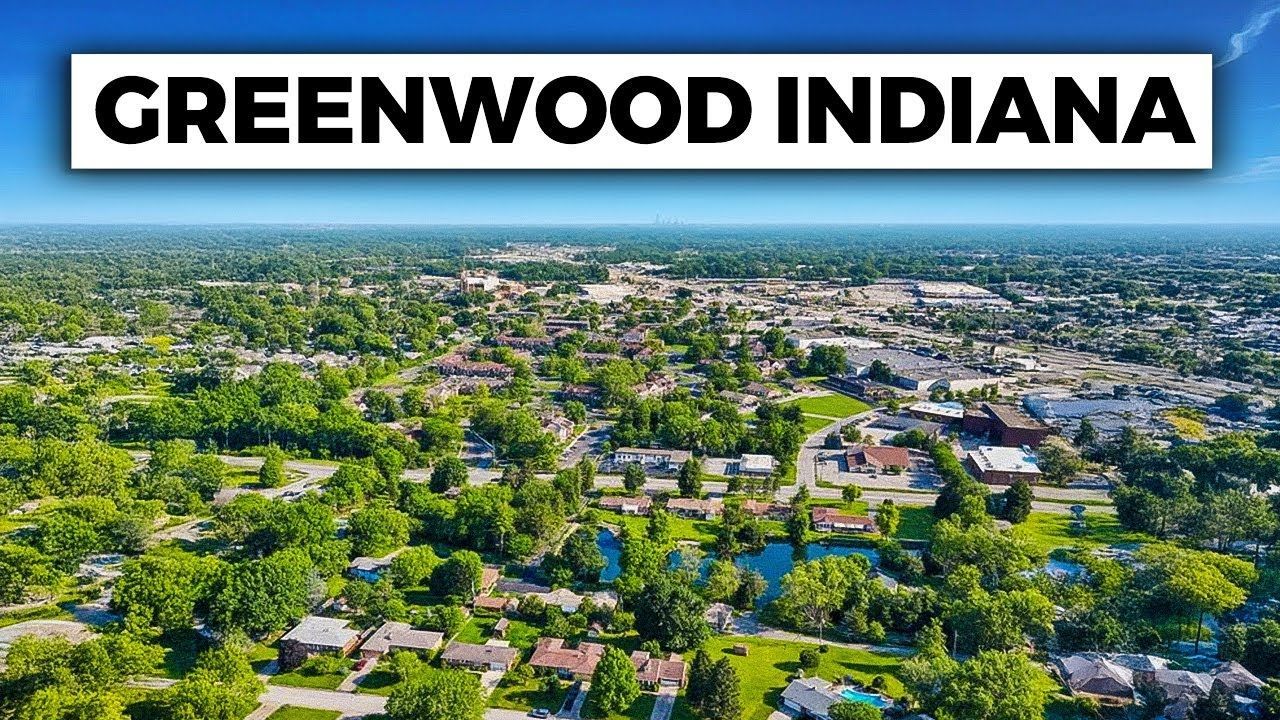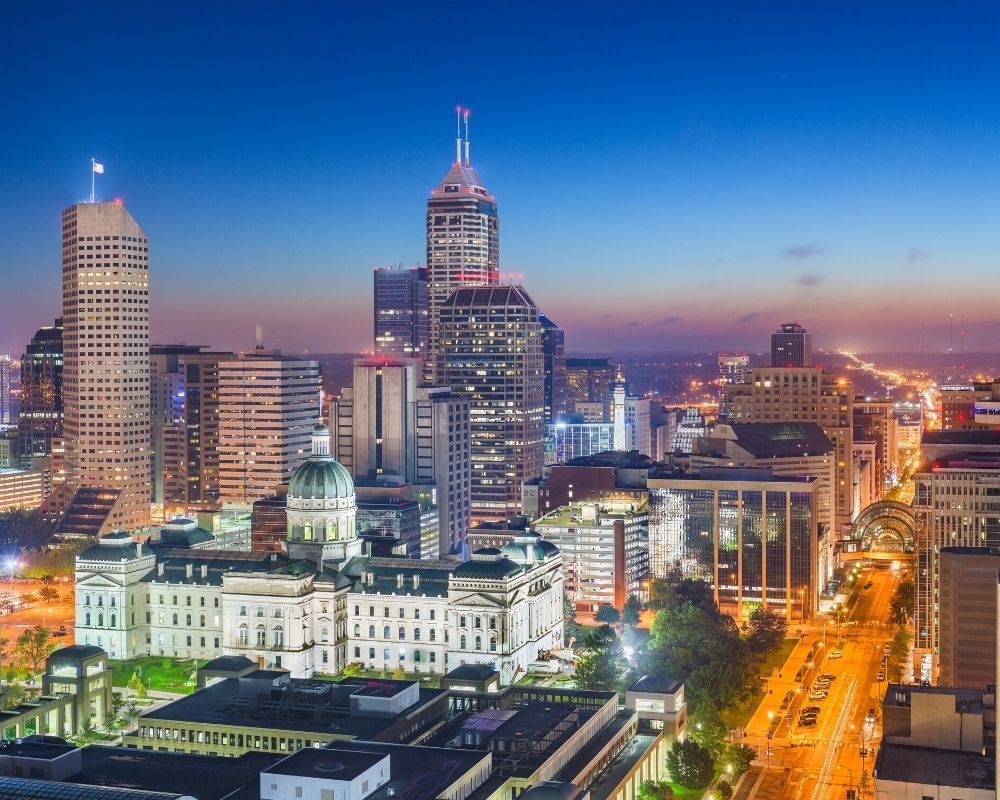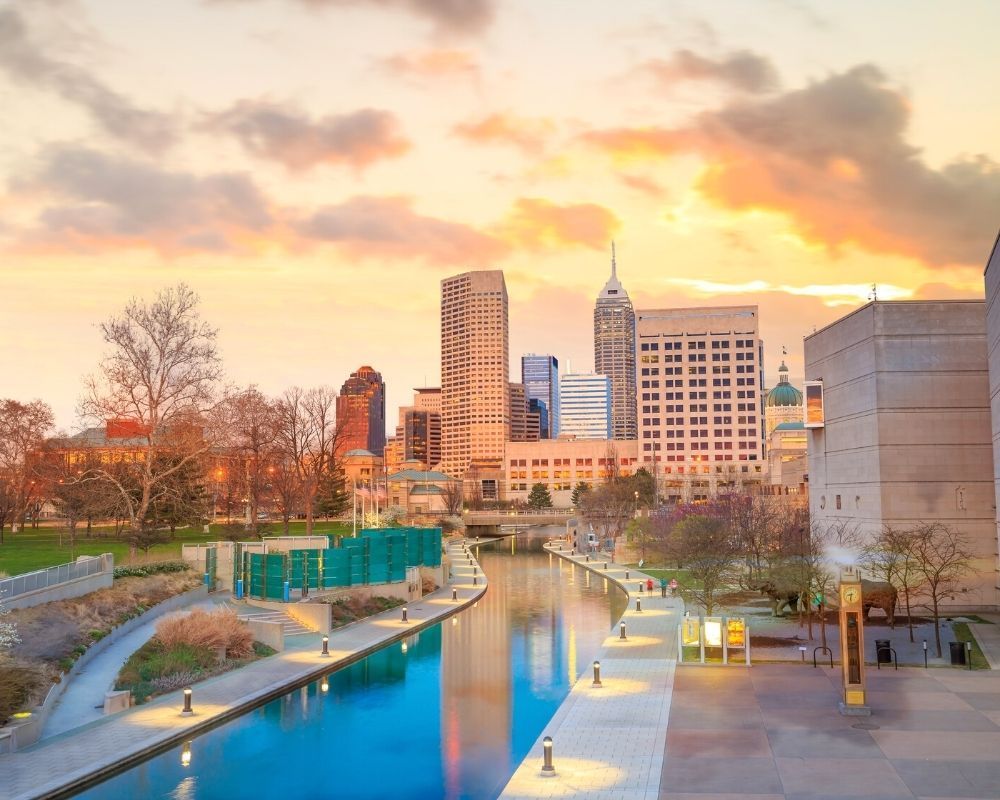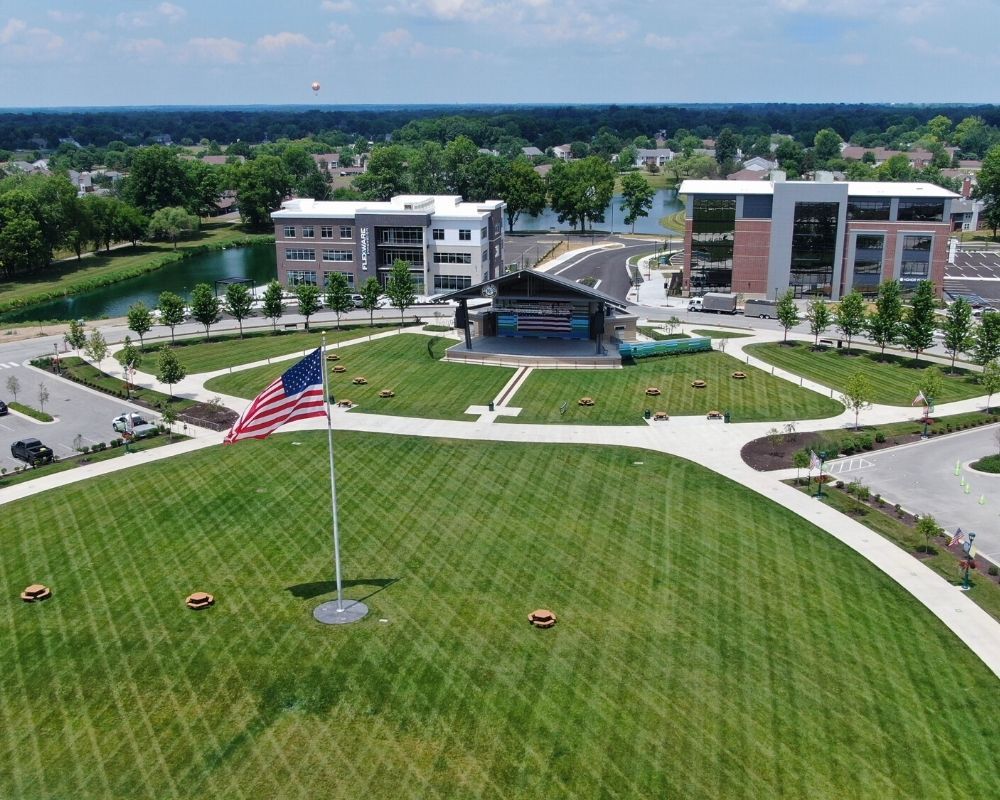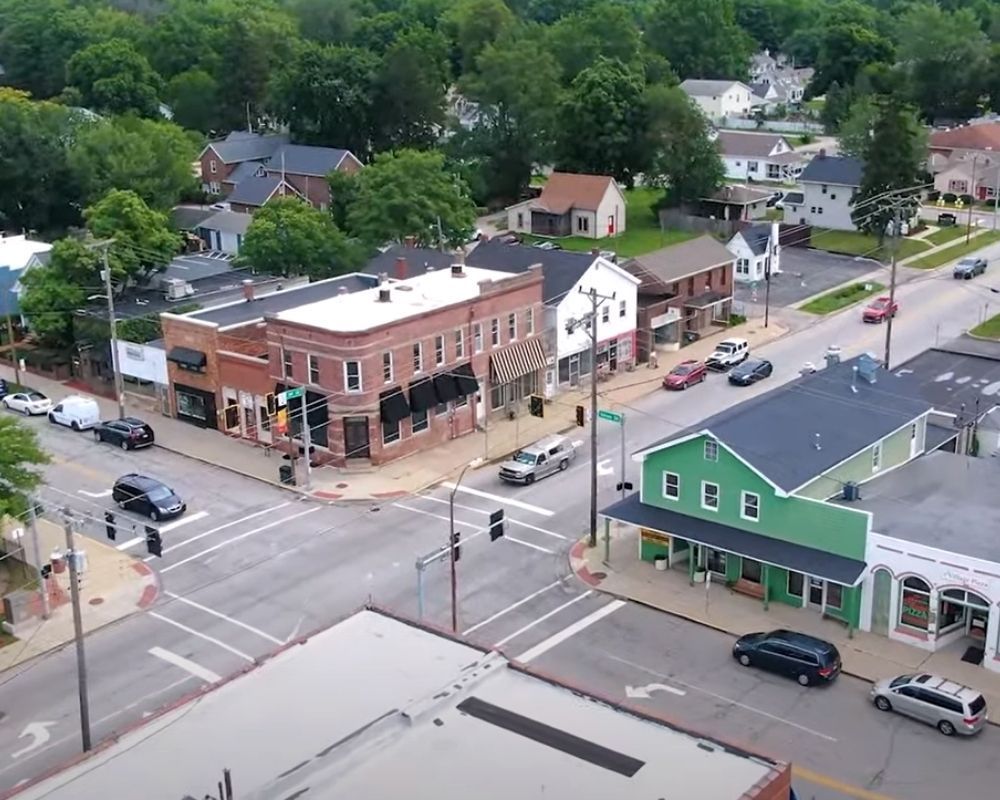Living in Carmel Indiana: A Full Insider’s Guide to Indianapolis #1 Suburb
When it comes to upscale, safe, and community-driven living near Indianapolis, Carmel, Indiana consistently stands out as the top choice. With a population just over 100,000, Carmel has earned its reputation as the best suburb in the Indianapolis metro area and one of the best cities to live in across the Midwest and even the entire country. From its award-winning schools and vibrant arts scene to its unparalleled infrastructure and luxury neighborhoods, Carmel offers a lifestyle that many aspire to but few cities can match.
In this comprehensive guide, we’ll explore what makes Carmel so special. We’ll dive into the city’s lifestyle and growth, break down the different areas within Carmel, explore housing options from luxury estates to family-friendly neighborhoods, and reveal the amenities that make life here enjoyable. We’ll also discuss the tradeoffs you should consider before making Carmel your home. Whether you’re moving into the area or just curious about what living in Carmel Indiana really looks like, this guide has you covered.
Table of Contents
- Why Carmel is the Top Suburb in Indianapolis
- Downtown Carmel Indiana and the Arts and Design District
- East Carmel Indiana: Established and Quiet
- West Carmel Indiana: Newer, Luxury, and Family-Friendly
- Family-Friendly Neighborhoods Across Carmel Indiana
- Amenities: Culture, Parks, and Hidden Gems in Carmel Indiana
- Tradeoffs of Living in Carmel Indiana
- Conclusion
- FAQs About Living in Carmel Indiana
Why Carmel is the Top Suburb in Indianapolis
Carmel’s status as the number one suburb around Indianapolis is the result of thoughtful planning, community investment, and a commitment to quality of life. It’s not just a suburb — many locals argue Carmel is a city in its own right, with its own culture, infrastructure, and economy that stand independently of Indianapolis.
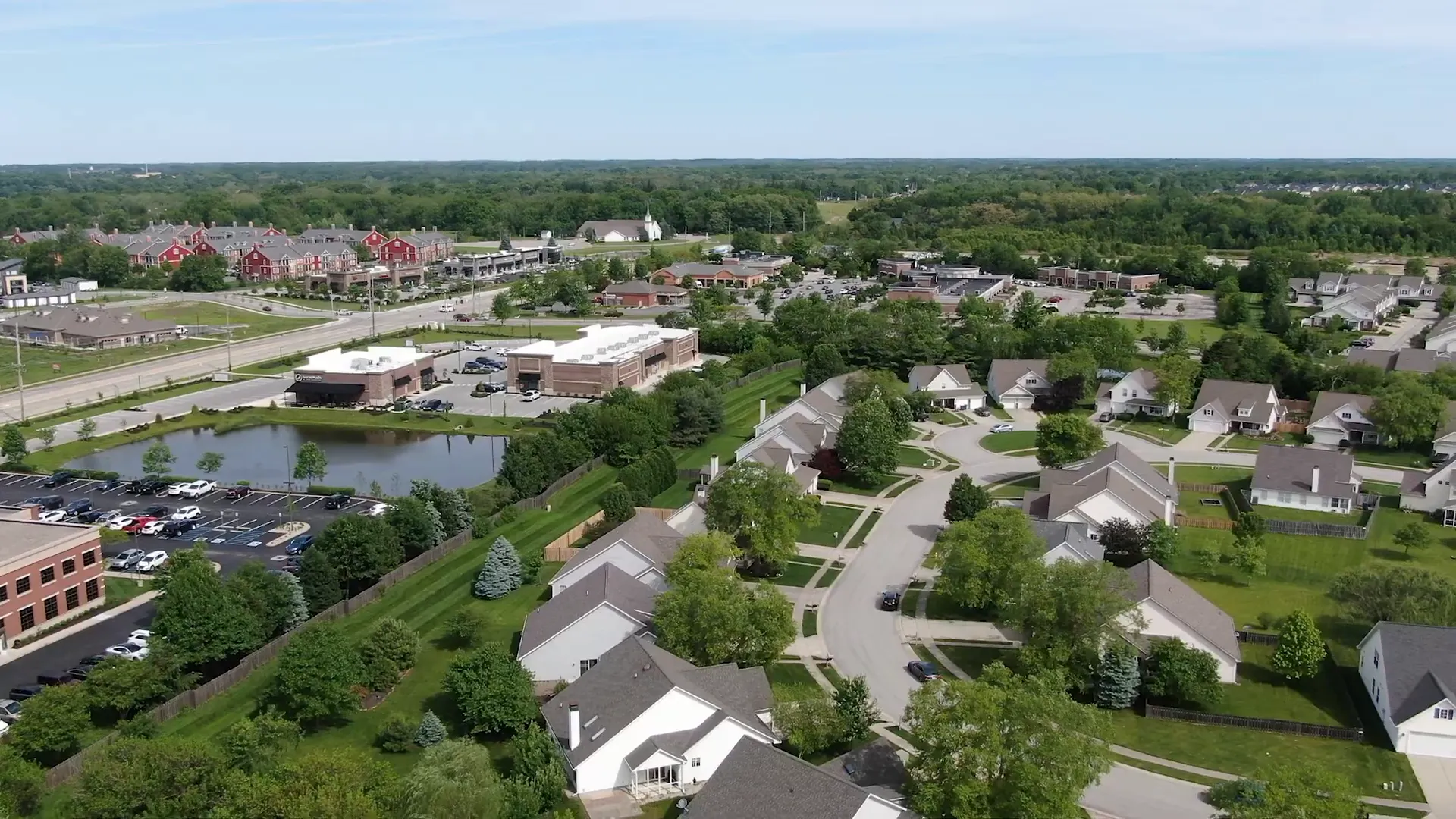
Lifestyle and Growth
Twenty or thirty years ago, Carmel’s population was less than 40,000. Today, it has grown to just over 100,000 residents. What’s remarkable is how Carmel has managed this growth. Unlike many rapidly expanding cities that struggle with congestion and infrastructure, Carmel has handled its expansion exceptionally well, becoming a benchmark for other cities.
The city boasts multiple walkable and bikeable districts, giving it a strong community feel. This is no accident — Carmel has been deliberately planned to foster a unique culture and sense of belonging. It doesn’t rely on nearby Indianapolis to define its identity; instead, it stands on its own as a vibrant community.
The arts scene in Carmel is thriving. Throughout the city, especially in downtown Carmel, you’ll find sculptures and art installations that enrich public spaces. These are sprinkled across neighborhoods, adding personality and charm. Beyond the aesthetics, Carmel’s streets and parks are meticulously maintained, contributing to a clean and welcoming environment that enhances daily life.
Exceptional Infrastructure
Carmel is famous for its roundabouts — more than 150 of them! It’s actually the city with the highest number of roundabouts in the country, which has dramatically improved traffic flow and safety. Interestingly, Carmel was the first city in Indiana to have a stoplight, but today, there are only about a dozen or so stoplights left, replaced by roundabouts and stop signs to accommodate pedestrians and cyclists.
The city’s infrastructure is designed to handle both local residents and transient traffic from nearby cities like Westfield, Fishers, and Zionsville. Despite the population density and busy thoroughfares, it’s rare to encounter a complete stop in traffic unless you’re pulling into a destination. This smart traffic management keeps Carmel feeling energetic without overwhelming congestion.
Strong Economy and Job Market
Carmel has a robust economy supported by major healthcare providers such as IU Health and Ascension St. Vincent, both of which operate hospitals within the city limits. This means residents have easy access to top-tier medical care without needing to travel far.
Beyond healthcare, Carmel is home to numerous corporate offices and headquarters, particularly in the tech and finance sectors. This strong job market makes Carmel attractive not only for residents but also for those commuting into the city for work.
Top-Rated Schools
The Carmel Clay Schools system serves the entire city with a unified public school district. Its high school alone has over 5,000 students, making it one of the largest in the state. Carmel’s public schools consistently rank in the top 10 in Indiana, a major draw for families looking for quality education.
This reputation for excellent schools contributes to Carmel’s high demand in the housing market. Luxury buyers and families alike are drawn to the area, which keeps home prices elevated compared to other parts of Indianapolis and Indiana as a whole.
Moderate Growth with Limited Space
While Carmel continues to grow, it’s doing so moderately. The city is essentially built out in all directions, limiting opportunities for large-scale expansion. New construction is mostly about infill development — filling gaps with condos, townhomes, and some apartments. Vertical construction is possible but also limited due to space constraints.
This scarcity of available land combined with high demand means property values are likely to continue rising, making Carmel a solid investment for homebuyers.
Downtown Carmel Indiana and the Arts and Design District
When people think of downtown Carmel, many picture the Arts and Design District. However, downtown Carmel is actually a collection of three distinct areas that together create a vibrant urban core for the city.
The Three Parts of Downtown Carmel
- Arts and Design District: This area is characterized by boutique shops, art galleries, and unique restaurants. It’s walkable, bikeable, and packed with cultural energy.
- Midtown Plaza: A bustling park area with pedestrian-friendly spaces, perfect for outdoor events and gatherings.
- City Center: Home to landmarks like the Palladium and the Carmichael Hotel, City Center offers upscale dining, shopping, and entertainment options.
All three districts are interconnected, making it easy to walk or bike between them. Parking, often a concern in busy urban areas, is surprisingly manageable in downtown Carmel, even during busy times.
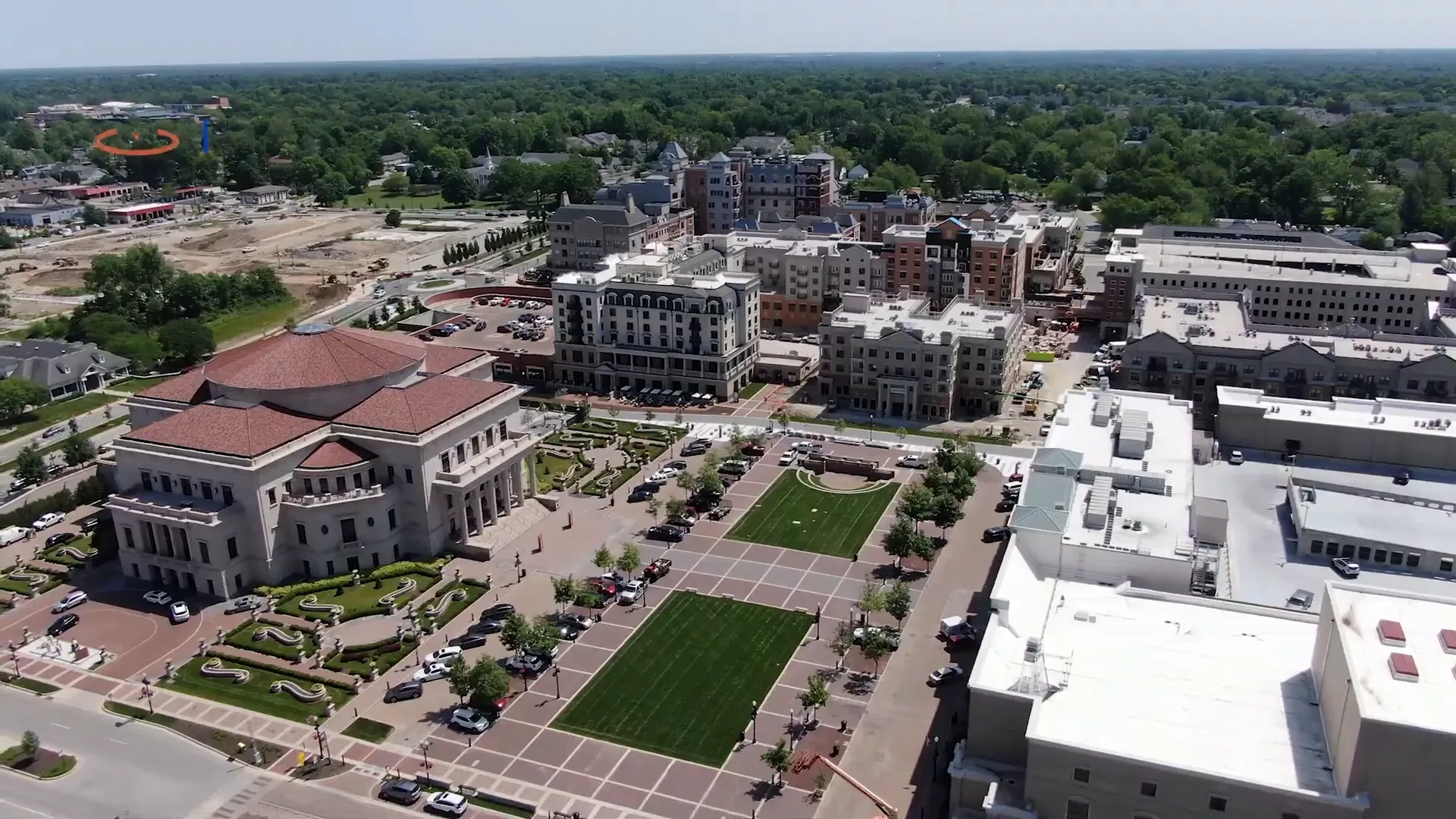
The Monon Trail: A Pedestrian and Cyclist Haven
One of the crown jewels of downtown Carmel is the Monon Trail, a multi-use trail that runs over 30 miles from Sheridan, Indiana, in the north down to the Bottleworks District in downtown Indianapolis. The trail passes right through downtown Carmel, providing easy access for cyclists and pedestrians.
On an average day, thousands of people use the Monon Trail, highlighting the active lifestyle embraced by Carmel residents. The trail connects neighborhoods, parks, and commercial areas, making it a vital artery for recreation and transportation.
Housing Options in Downtown Carmel
Downtown Carmel’s housing market is dominated by condos and townhomes, often with a brownstone-style aesthetic. Prices here start around $500,000 and can reach upwards of $1.5 million or more. A rare penthouse recently sold for $6 million, showcasing the level of luxury available.
While single-family homes are less common directly in downtown, just a few minutes’ walk north of the Arts and Design District you can find beautiful newer homes, many built by popular local builders like Oldtown. These homes are larger, modern, and filled with upscale finishes, catering to luxury buyers.
Older homes also exist in downtown neighborhoods, though they are becoming rarer as many are torn down to make way for new construction. The price for homes in this area generally starts at around $1 million, reflecting the desirability and limited availability.
Who Lives Downtown?
Downtown Carmel attracts a diverse group of residents. From young professionals to retirees, families with children to empty nesters, the area offers something for many lifestyles. The walkability, bikeability, and urban amenities appeal to those who want to be in the heart of city life while still enjoying the safety and culture of Carmel.
However, the high cost and urban feel mean it’s not suitable for everyone, especially families looking for larger homes or more privacy. For those who want a suburban feel with easy access to urban amenities, downtown Carmel is a perfect fit.
East Carmel Indiana: Established and Quiet
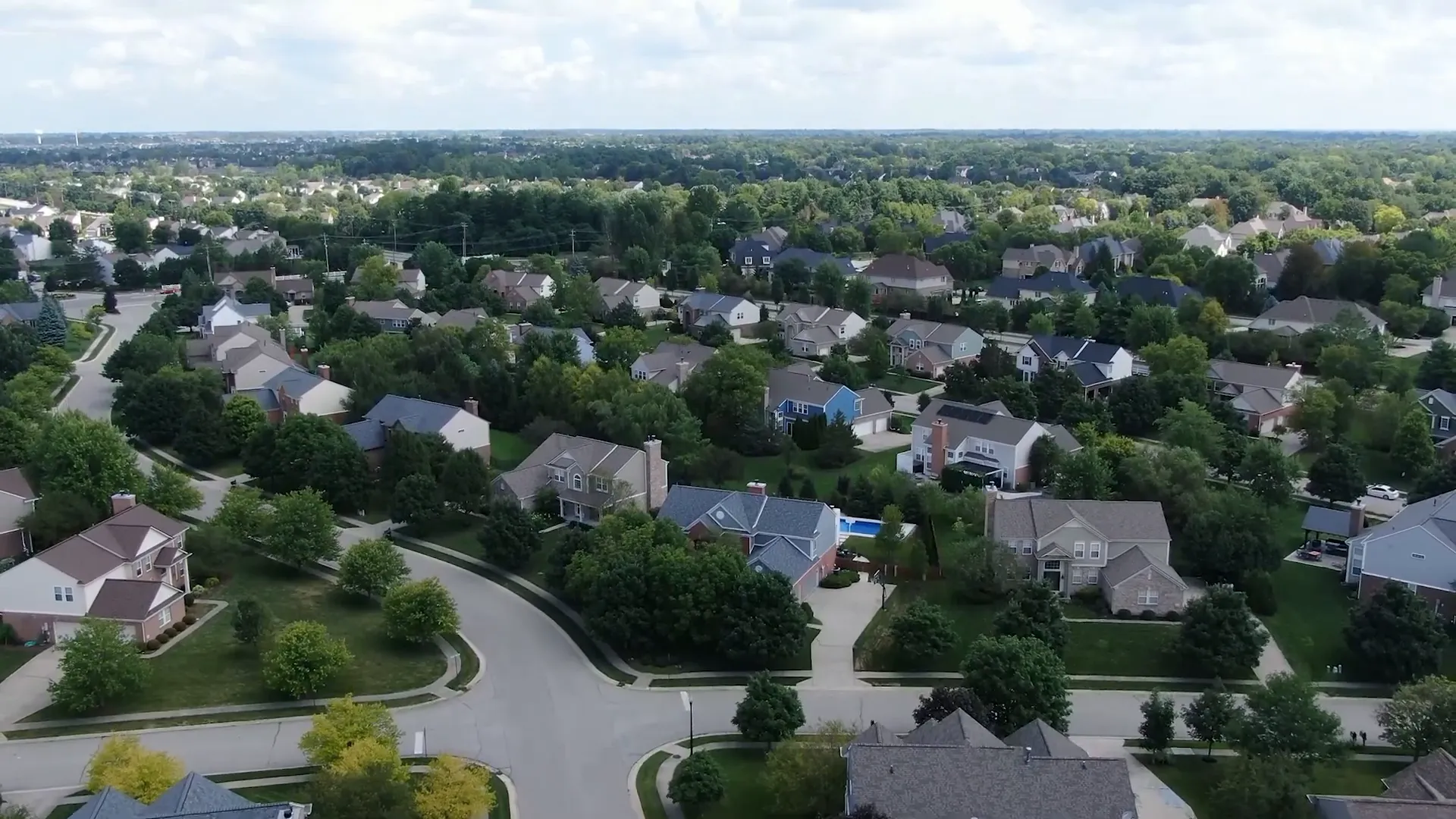
East Carmel offers a very different vibe compared to downtown. This area is known for its quiet, spacious streets lined with mature trees and older, single-family homes. Many of these homes were built between the 1950s and 1980s, giving the area a more established and traditional feel.
Neighborhoods like Brookshire Parkway and Cool Creek are typical examples of East Carmel living. The streets are wide, traffic is minimal, and sidewalks are common, making it a peaceful place for families and those who want space to spread out.
Housing Characteristics
Homes in East Carmel tend to be older and may require updates or renovations. Some still have vintage features like original intercom systems or appliances that are decades old. This can be a drawback for buyers looking for move-in ready properties but an opportunity for those who want to customize their home.
Prices here are generally more affordable than downtown or West Carmel, with some homes available around the $500,000 mark. However, availability is limited, and competition for homes in this desirable area can be strong.
Buyers interested in East Carmel should be prepared to prioritize what they want, balancing the charm and location with the potential need for renovations.
West Carmel Indiana: Newer, Luxury, and Family-Friendly
West Carmel provides yet another distinct living experience. This area is characterized by newer construction, larger homes, and a variety of housing options including gated communities, townhomes, and sprawling estates.
One of the most notable communities in West Carmel is the Village of West Clay, a mixed-use neighborhood with restaurants, shops, and businesses. While it’s not a full master-planned community with all daily necessities, it offers a charming “village” feel with walkability and social hubs.
Luxury and Estate Living
West Carmel is home to some of the most luxurious properties in the area. Gated communities like The Estates of West Clay and Laurelwood feature multi-million dollar homes on large lots, some exceeding 10,000 square feet. These neighborhoods offer privacy, exclusivity, and upscale amenities.
Entry-level homes in West Carmel start around $600,000, but prices can easily climb into the multi-millions depending on size, location, and amenities.
Golf Course Communities
For golf enthusiasts, West Carmel is home to prestigious clubs like Crooked Stick, a nationally recognized course that has hosted the PGA Tour, PGA Championship, and the US Women’s Open. The area around Crooked Stick features estate-like properties that attract ultra-wealthy residents.
Another notable golf club is the Bridgewater Club, located a bit north of West Carmel. While still exclusive, Bridgewater offers a wider variety of housing options including townhomes and single-family homes, making it more family-friendly.
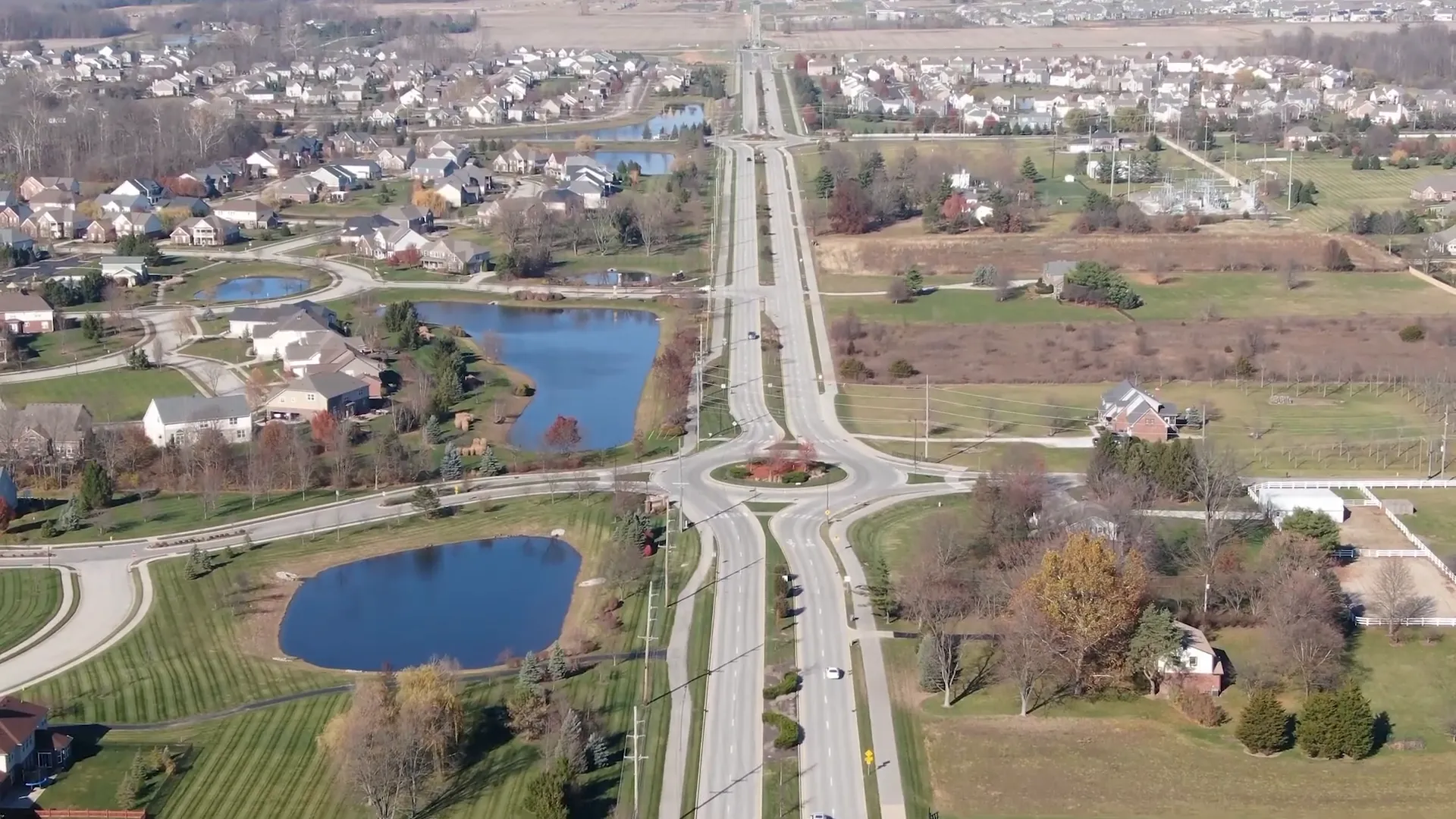
Family-Friendly Neighborhoods Across Carmel Indiana
One of Carmel’s biggest draws is its family-friendly atmosphere. Most neighborhoods in Carmel cater to families, but some stand out for their amenities and community feel.
Claridge Farm, located on the west side, is a prime example. It offers large yards, playgrounds, tennis and pickleball courts, basketball courts, and a community pool. Amenities like these foster an active lifestyle and provide safe spaces for children to play.
Many neighborhoods have active homeowners’ associations (HOAs) that maintain common areas and enforce community standards, contributing to the well-kept appearance and safety of the area.
Another family-friendly feature is Carmel’s extensive bus route system. While not every home is right on a bus stop, most residents can walk a short distance to catch a bus, providing convenient transportation options for school and activities.
Amenities: Culture, Parks, and Hidden Gems in Carmel Indiana
Carmel’s amenities go well beyond schools and housing. The city boasts a rich cultural scene anchored by The Palladium, a world-class performing arts center. Here, residents can enjoy concerts, theater productions, orchestral performances, and festivals like Carmel Fest.
Though some residents might not attend events regularly, having access to such cultural institutions adds to the city’s appeal and quality of life.
Healthcare amenities are well distributed, with facilities from IU Health and Ascension St. Vincent located throughout Carmel.
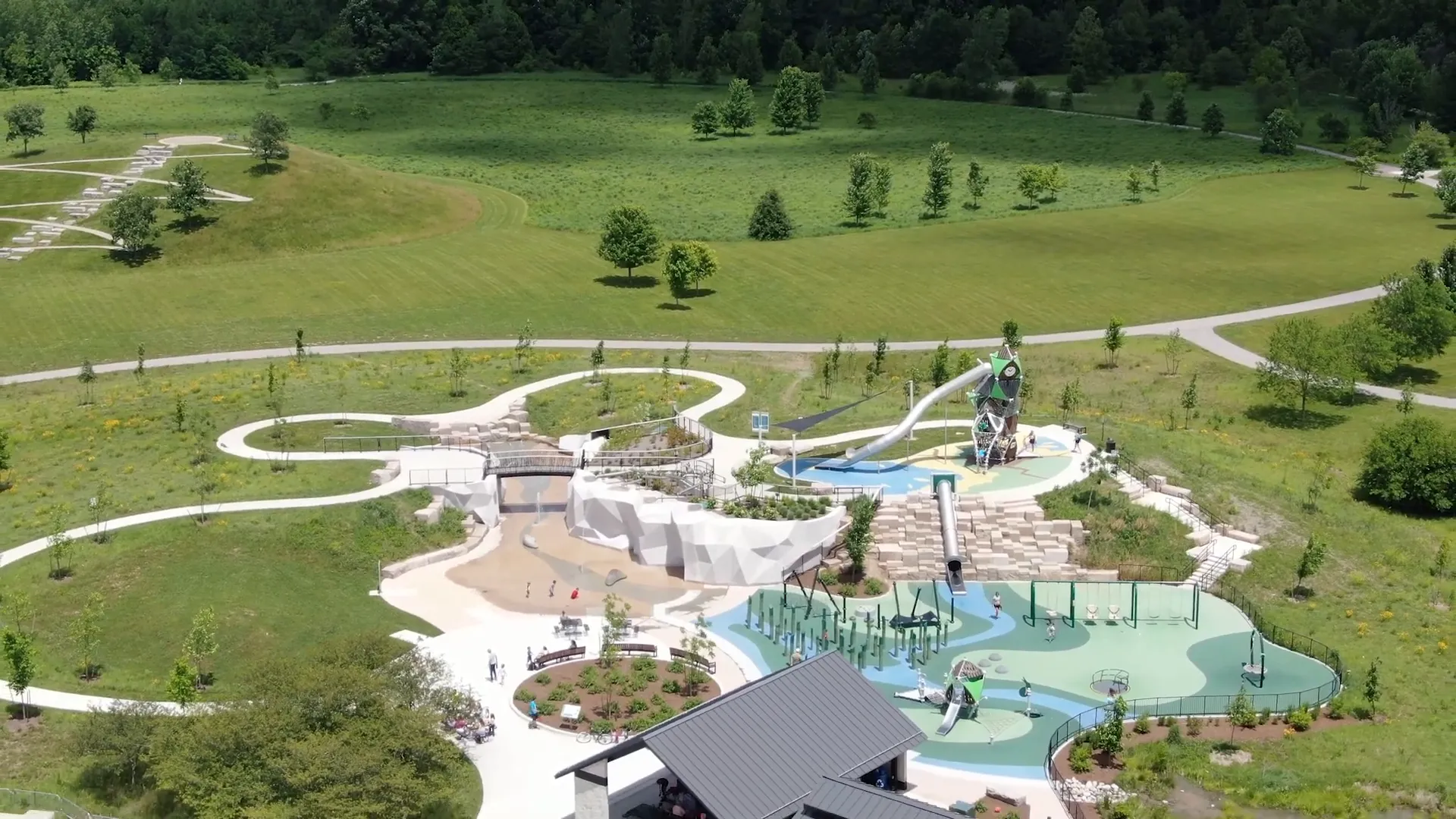
For outdoor enthusiasts and families, Carmel offers an abundance of parks with unique features:
- Prather Park: Trails and river access along the White River.
- Founders Park: A smaller park with playgrounds by the river.
- West Park: Known for its rock formations, waterfall, and playgrounds.
These parks and many others scattered throughout Carmel provide residents with ample green space and recreational opportunities that complement the city’s vibrant urban areas.
Tradeoffs of Living in Carmel Indiana
While Carmel offers many benefits, it’s important to acknowledge the tradeoffs that come with living in such a sought-after city.
High Cost of Entry
One of the most obvious challenges is the cost of buying a home. Carmel is one of the most expensive places to live in Indiana and even the Midwest. Entry-level homes under $500,000 are rare, and breaking into the market under $600,000 often requires significant compromises such as older homes, smaller size, or less desirable locations.
Prevalence of Homeowners’ Associations (HOAs)
Carmel’s well-maintained neighborhoods often come with HOAs that enforce community standards and manage amenities. While this contributes to the city’s clean and safe environment, it also adds monthly fees and restrictions that some buyers may find limiting.
Walkability Limitations
Despite having walkable districts like downtown, much of Carmel is suburban in nature. Many luxurious estate neighborhoods are located along busy roads where walking to shops or cafes is impractical. Access to trails like the Monon is often limited to certain neighborhoods, meaning driving is still necessary for many errands and activities.
Traffic and Activity Levels
Carmel has an energetic vibe with constant activity and traffic, especially on major roads like US 31, Keystone Avenue, and east-west arteries such as 96th, 106th, and 131st Streets. While traffic jams are rare thanks to the roundabout system, the city is never completely quiet or empty.
This lively atmosphere is a plus for many but might feel busy for those seeking a quieter, more rural setting.
Conclusion
Living in Carmel Indiana offers a unique blend of upscale suburban comfort, vibrant urban culture, and excellent amenities. Whether you’re drawn by the thriving arts scene, top-tier schools, luxury homes, or the well-planned infrastructure, Carmel stands out as a city that truly delivers on quality of life.
Understanding the distinct personalities of downtown, East Carmel, and West Carmel can help you find the perfect neighborhood that matches your lifestyle and budget. While the cost of living and HOAs may be a consideration, the long-term value and community benefits make Carmel an attractive place to call home.
If you’re thinking about moving to Carmel or want to learn more about the Indianapolis metro area, having the right information can make all the difference. Don’t hesitate to reach out to me, your local expert, who can guide you through the process and help you discover all that Carmel has to offer. I am the expert you need! Call me at 317-932-8620 or visit my website at www.livinginindianapolis.com.
VIEW HOMES FOR SALE IN CARMEL INDIANAFAQs About Living in Carmel Indiana
What makes Carmel, Indiana one of the best places to live?
Carmel combines excellent schools, a strong economy, a vibrant arts scene, superior infrastructure with its famous roundabouts, and a safe, community-oriented atmosphere that appeals to families and professionals alike.
How is the housing market in Carmel?
The housing market in Carmel is competitive and tends to be on the higher end, with entry-level homes typically above $500,000. Options range from downtown condos and townhomes to luxury estates in gated communities, especially in West Carmel.
Is Carmel walkable?
Downtown Carmel and the Arts and Design District offer walkable and bikeable environments, but many suburban neighborhoods, especially estate communities, require driving for most errands. The Monon Trail provides excellent walking and biking opportunities.
What are the best family-friendly neighborhoods in Carmel?
Most of Carmel is family-friendly, with neighborhoods like Claridge Farm offering amenities such as pools, playgrounds, and sports courts. The city also has a comprehensive school system and bus routes to support families.
Are there golf communities in Carmel?
Yes, West Carmel features prestigious golf communities like Crooked Stick and the Bridgewater Club, which offer luxury homes and exclusive club amenities.
What are the main tradeoffs of living in Carmel?
The primary tradeoffs include higher home prices, the prevalence of homeowners’ associations with associated fees and restrictions, limited walkability in some areas, and a generally busy atmosphere with consistent traffic.
jason compton
A former teacher turned full-time real estate agent serving Greater Indianapolis. I help buyers, sellers, and relocation clients make informed moves—especially those coming from out of state. From neighborhood insights to home tours, my goal is to simplify the process and help you feel confident in every step.
Stay Informed
Insights, Tips & Life in Indianapolis
Your go-to resource for all things real estate and Indy living. Whether you're buying, selling, relocating, or just curious about the local market, our blog is packed with helpful articles, expert advice, and community highlights to keep you informed and inspired.
